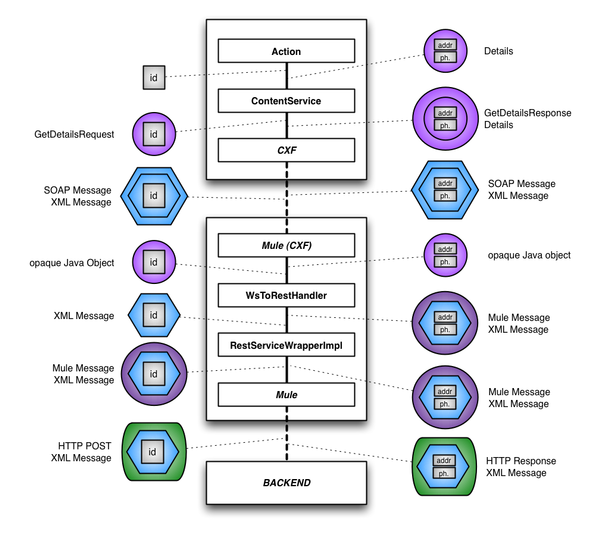Request Stream Map
1 July 2009
Hang around my colleagues at Thoughtworks and you soon get the impression that the only good Enterprise Service Bus (ESB) is a dead ESB. Jim Webber refers to them as Erroneous Spaghetti Boxes. So it's not uncommon to hear tales of attempts to get them out of systems that don't need them.
Battle was joined at one client and it brought to mind my younger days playing D&D. Webber swings but misses as the ESB is AC 2, Evan gets a hit and rolls 2d8 for 6 damage. Erik finally kills it by casting “Summon Request Stream Map“.
So what was Erik Dörnenburg's decisive spell? Essentially the idea was to take a simple request and show how the data for the request and response made their way through the layers of the application. Erik printed out all the code that you needed to read to understand how this would work - which ran to several pages. He also produced this diagram.

It's currently fashionable in agile circles to do Value Stream Mapping as a way to uncover waste in a software development process. I think of this as a request stream map because it similarly takes a request and shows how it moves through the layers allowing us to visualize what's going on and think about the cost and value of the layers.
Layering is an essential tool for building software applications. But like most essential things in life, excess can be almost as much of a problem as too little. A visualization like this (or the multiple pages of code) can help you find where “just enough” is.
One hazard, however. If you do need to transform data from one form to another, it's usually better to a few little transformations than one big transformation. You want to avoid unnecessary transformations not compress the ones you need.

